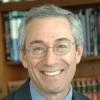Thomas R. Insel

Thomas R. Insel
Thomas Roland Inselis an American neuroscientist and psychiatrist who led the National Institute of Mental Healthfrom 2002 until November 2015. Prior to becoming Director of NIMH, he was Director of the Center for Behavioral Neuroscience at Emory University in Atlanta, Georgia. He is best known for research on oxytocin and vasopressin, two peptide hormones implicated in complex social behaviors, such as parental care and attachment. He announced on Sept. 15, 2015, that he was resigning as the director of the...
NationalityAmerican
ProfessionScientist
Date of Birth19 October 1951
CountryUnited States of America
What do we know about autism in 2013? Autism symptoms generally emerge before age three and usually much earlier, often as language delays or lack of social engagement. Recent research suggests that autism can be detected during the first year of life, even before classic symptoms emerge. Indeed, the symptoms may be a late stage of autism.
Nearly every business collects metrics on inventory, sales, and workplace process. Health care has been slow to measure these kinds of outcomes. Increasingly, general medicine, via either managed care or large practice settings, is improving by collecting data through electronic records and refining practice based on what works.
When we talk about the brain, it is anything but unidimensional or simplistic or reductionistic.
I was sure I was going to be a doctor of global health or tropical medicine in some underdeveloped country.
Reports that online cognitive behavioral treatment can be as effective as in-person psychotherapy suggest that technology will expand access, extend the impact of a therapist, and expedite treatment for people who might not find 'seeing' a therapist acceptable.
I trained in psychiatry in the 1970s, and much of our training was about what was then psychoanalytic theory, with a little bit of theory from Jungian psychology and a few other places.
Sometimes, patients with serious mental illness, just as with other serious medical illnesses, require hospitalization. In the absence of available public or private hospital beds, there are few options.
We need to ask whether, in the long term, some individuals with a history of psychosis may do better off medication.
Unlike the heart or kidney, which have a small, defined set of cell types, we still do not have a taxonomy of neurons, and neuroscientists still argue whether specific types of neurons are unique to humans. But there is no disputing that neurons are only about 10 percent of the cells in the human brain.
What causes autism? As far as we know in 2013, there is no single gene or single environmental factor that accounts for the more than 1 million Americans with ASDs.
A National Database on Autism Research is fostering sharing of data and collaborations. Scientists are also making great strides at the interface of biology and engineering with new technologies that are laying the groundwork for future advances.
We have to remain humble about our understanding of the brain, because even our most powerful tools remain pretty blunt instruments for decoding the brain. In fact, we still do not know how to decipher the basic language of how the brain works.
Most of our brain cells are glial cells, once thought to be mere support cells, but now understood as having a critical role in brain function. Glial cells in the human brain are markedly different from glial cells in other brains, suggesting that they may be important in the evolution of brain function.
In the 1830s, Dorothea Dix revolutionized the care of people with mental illness by taking them out of jails and caring for them in asylums, later known as state hospitals.